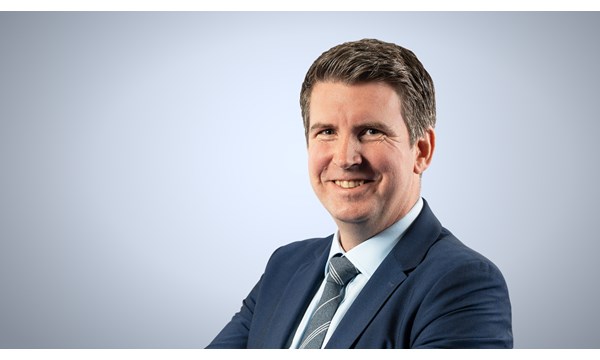Debating the future direction of the LNG market
Five takeaways from our LNG Roundtable with Mayer Brown
3 minute read
Giles Farrer
Vice President Research, Commodities, Gas & LNG

Giles Farrer
Vice President Research, Commodities, Gas & LNG
Giles heads our LNG and gas asset research and manages our market-leading LNG Service & Tool and LNG Corporate Service.
Latest articles by Giles
-
Opinion
Debating the future direction of the LNG market
-
The Edge
Positioning for global LNG’s next big growth phase
-
Opinion
Third wave US LNG: a $100 billion opportunity
-
Opinion
LNG: seismic shifts as Russia/Ukraine conflict makes waves
-
Opinion
LNG regasification: why there’s still plenty of gas in the tank
-
Opinion
How coronavirus is driving down LNG demand in Asia and Europe – and hitting supply
Frank Harris
Head of Global LNG Consulting

Frank Harris
Head of Global LNG Consulting
Frank is a recognised expert on the global LNG industry and leads our global consultancy practice in this area.
Latest articles by Frank
-
The Edge
Taking the pulse of the global LNG industry
-
Opinion
Debating the future direction of the LNG market
-
The Edge
WoodMac’s Gas, LNG & Future of Energy conference – five key takeaways
On the 15th May in London, Wood Mackenzie and Mayer Brown hosted an LNG Roundtable that assembled two panels of senior experts from across the Gas & LNG industry to debate the future direction of the market.
The incisive and informed discussion considered the issues of today across the global LNG sector including the global outlooks for LNG, the DOE Pause, price evolution, emissions, contracting and SPA developments.
Fill in the form to download our key takeaways and read on for a brief introduction to the main themes discussed.
Since the peak of the energy crisis in 2022, the global gas and LNG market has largely rebalanced. Prices are relatively low but still high by historic standards. There’s a lot of gas in storage, courtesy of mild weather. But volatility remains a persistent feature of the market.
Sentiment on the gas and LNG sector was overwhelming positive throughout the session as the panels discussed global and Europe market fundamentals, potential for a double dip price cycle, implications for long-term contracting, availability of new LNG supply in light of geopolitics, and mounting concerns about LNG emissions.
Confidence in the gas and LNG sector continues to strengthen
Panellists agreed that gas and LNG would be needed for longer than many are willing to recognise, and confidence in the industry’s future was strong. Gas demand is expected to be resilient in Europe and to grow in China throughout this decade. After 2035, South and Southeast Asia will take over as the global engine of growth (which creates new challenges as buyer needs therein are different), albeit the average pace slows.
Buyers are increasingly cautious when contracting over the long term as a result with many opting for a wait and see approach in the current market, despite contract prices rumoured to be falling towards 12% Brent slope. Additionally, many buyers currently prefer deals of shorter tenor – 10 to 15 years rather than 20 years or longer – and the value of flexibility is also rising.
Is the double dip price cycle a foregone conclusion? Alongside this robust outlook for LNG demand, it’s well understood by the industry that a wave of new supply is on the horizon causing global spot prices to soften in the late 2020s. But a second wave (of currently pre-FID supply) led by the US and Qatar is now shaping up, setting price curves on course for a second dip in the early 2030s. Whether this second dip is a foregone conclusion though was hotly debated.
Europe remains complicated
Discussion came closer to home with focus on Europe. European demand for LNG has soared since Russia’s invasion of Ukraine and cessation of large-scale Russian piped flows. LNG demand is expected to surprise to the upside in terms of level and longevity, but many cautioned that it is not a given. This remains a primary concern for the region when it comes to contracting and infrastructure build, alongside energy policy and regulation which is both a key enabler and hurdle.
Continued and considerable interest emerged in all things floating
What was clearer from the Europe discussion was the appetite for FSRUs and desire to retain these after current charters expire. With competition from Southeast Asian markets expected to rise, the panel posed the question of whether FSRUs can be unlocked from Europe? Without these vessels, there will be pressure on the FSRU market, driving higher charter rates and greater demand for new FSRU vessels or converted FSU ships. And these FSRUs are vital for strong, future LNG demand to materialise in Asia and for these markets to respond to low prices as they have done in the past.
The roundtable showed that sentiment around the long-term attractiveness of the LNG market continues to strengthen, further evidenced by the attendance of many players that are either new to LNG or scaling up their presence and investment. That said, the debate also highlighted the many uncertainties that are expected to characterise LNG’s future path and create continued volatility.







